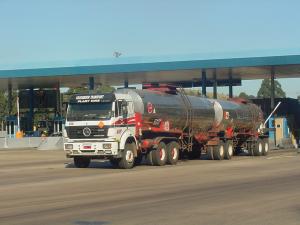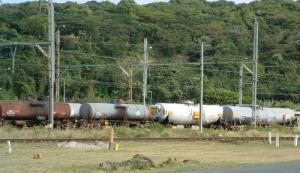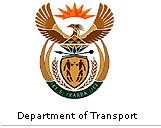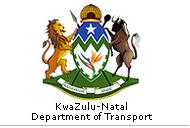Petroleum Refining and Distribution2006 was the sixth consecutive year in which aggregate
sales of petroleum products in South Africa have
increased, reflecting the increases in motor vehicles
registered over the period and the switch from rail to
road transport for freight traffic.
Sales of petroleum products exceeded 24 billion litres
for the first time, an increase of 21% over the previous 3
years. Diesel sales in 2006 were 8,7 billion litres which
are 40% above the 2000 level of 6,2 billion litres,
reflecting the massive volumes of road freight haulage of
basic commodities such as coal, maize and ores.
The estimated volumes of petroleum products (in litres)
used by end-user designation in KwaZulu-Natal is shown in
the table below.
As shown in the table the sales of diesel by general
dealers and the usage by the road freight industry
dominate the usage of diesel in the province. The sales of
petrol are highest at retail garages. Petroleum Manufacture and DistributionThe centre of the KZN petroleum and petrochemical
industry is in the Prospecton area where the refineries
are located a short distance inland from the Offshore
Mooring Buoy that provides the direct pipeline from the
deepsea tankers delivering crude oil imports, primarily
from the Gulf. Approximately 21 million tons per year are
discharged from this facility and pumped ashore as feed
stock to the coastal and inland refineries.

Fuel Tanker
|
Transport of Petroleum productsThe main transport of petroleum products in KwaZulu-Natal
is done by the pipelines that supply the inland areas of
South Africa . Approximately 21 million tons of diesel,
petrol and jet fuel are pumped through these pipelines per
year.
The pipelines have off-take points at Pietermaritzburg,
Ladysmith, Newcastle and other points beyond the KZN
border en route to Sasolburg.
From these centres products are delivered to service
stations by smaller road tankers. The distribution of
petroleum products throughout South Africa by road was
prescribed until 1989 for distances greater than 80 km
radius from loading point in terms of the Road
Tansportation Act ( No 74 of 1977) in order to retain the
commodity on rail. When the exempted areas were increased
in size by amendment 2677/8 of the Act, petroleum products
were specifically excluded in terms of section 6q (iii). After urgent applications by the petroleum industry, the
restriction was repealed and the industry lost little time
in reorganising the depot structures and long-distance
transport arrangements.
The current situation is that petroleum companies
operate their own long-haul maximum mass combination
vehicle fleets from Durban and
Ladysmith.
These fleets supply directly to filling stations and
customers all over the province.
As nearly all petroleum products are distributed by road
throughout KZN, it can be assumed that approximately 1.8-
2.0 million tons per annum are being transported on the
roads for delivery in KZN. If the long-haul deliveries to
inland areas of South Africa, Swaziland and Lesotho are
included, the annual tonnage of petroleum products on road
is about 5.0 million tons.
The abovementioned tonnage transported by road of 2.0
million tons per year to centres throughout KZN may be
higher, as in many cases this tonnage is taken first to
depots and agencies, and then reloaded for distribution to
service stations.
The oil companies have a general policy of using national
routes where possible for their primary distribution. The
secondary distribution from depots and agencies is mainly
on provincial routes and urban streets. In the past there were rail services to Cedarville,
Vryheid, Pietermaritzburg and Newcastle as well as over-
border deliveries to Lesotho (and via contractors to
Swaziland), but these have almost ceased. Apart from local movements, approximately 1.5 million tons
of fuel are received on rail at the port of Durban from
inland refineries, for export.
The movement of petroleum products from the port of Durban
to
other SA ports is about 3.0 million tons per annum.

Petroleum rail tankers
|
|



